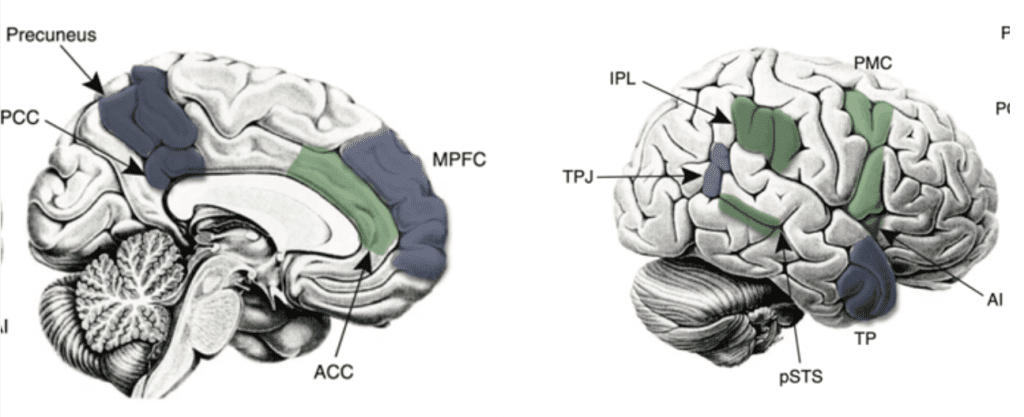This article was originally published in Chinese.
On April 15, 2019, the Notre-Dame Cathedral in Paris caught fire. The blaze began in the cathedral’s attic and spread to the entire spire in less than 30 minutes. Soon, accompanied by a loud noise and screams, the spire, restored in the 19th century, collapsed. The fire continued until the early hours of the next day before it was extinguished. This fire sparked widespread discussion on domestic social media.
Many people shared their travel photos of Paris in their social circles, expressing that their “hearts were breaking.” Additionally, another sentiment emerged: “Although I acknowledge the artistic value of Notre-Dame and regret its destruction, the thought of the French burning down the Old Summer Palace in China gives me a sense of karmic retribution.” In this debate, those saddened by the fire labeled those who rejoiced in the fire as “narrow-minded nationalists,” while the latter criticized the former as “hypocritical” and “worshipping foreign things.” For a long time, these two voices clashed without convincing each other.
One might argue that Notre-Dame is a French national treasure, far removed from us, but why do we have such different emotional reactions and moral judgments to this fire? Are those heartbroken over the Notre-Dame fire overly sentimental? Are those who sigh over “karmic retribution” truly lacking in empathy? What exactly is the relationship between empathy and morality?
In layman’s terms, empathy is the ability to feel what others feel and think from their perspective. The relationship between empathy and morality has long been a heated topic of discussion among philosophers and psychologists. Mencius said, “The feeling of compassion is the beginning of humanity,” suggesting that our innate ability to empathize is the starting point for possessing moral qualities like benevolence. In the 18th century, Adam Smith, in “The Theory of Moral Sentiments,” proposed a similar view: the ability to empathize with others is an indispensable part of human social activity and forms the basis of responsibility and other moral qualities. It seems to be a consensus that people with a strong capacity for empathy have higher moral standards.
However, one of the strengths of psychologists is not to take any intuition or common sense for granted, including the moral value of empathy. Two prominent psychologists, Paul Bloom and Jamil Zaki, have debated this issue. Paul Bloom calls for moving beyond empathy, while Jamil Zaki defends its value.
In 2016, Paul Bloom published his new book “Against Empathy” [1], the core argument of which is that empathy is narrow and not suitable as the basis for moral judgment. We need to move beyond empathy and replace it with rational “sympathy.”
Empathy is a multi-dimensional concept, emphasizing both emotion and understanding/thinking. Psychologists have proposed many theories to deconstruct empathy (referred to as “empathy” hereafter), with the most widely accepted theory dividing it into affective empathy and cognitive empathy. The former is our spontaneous ability to feel others’ inner emotions, while the latter is our analysis and understanding of others’ inner states. Studies have found that affective empathy is present in infancy, with newborns spontaneously imitating facial expressions of others, and the cries of other infants causing them anxiety. Cognitive empathy, involving more complex thought processes, appears around one year of age and gradually matures with age.
Bloom hopes we move beyond affective empathy, which, in his view, is easily influenced by irrelevant environmental factors, leading to biased moral judgments. Consider the following scenarios: “A six-year-old girl with beautiful brown hair has a terminal illness and needs thousands of dollars in medical expenses to survive until Christmas.” Versus: “If taxes are reduced, public hospital facilities will age, leading to a slight, almost imperceptible increase in patient deaths.” [2] The consequences of these two situations might be equally serious, but the first is more likely to elicit sympathy and raise more donations than the second. The object of affective empathy is often an identifiable victim rather than abstract data. If we let affective empathy dominate our moral judgments and decisions, we might overlook those unseen yet more needy. Therefore, Bloom calls for us to move beyond empathy and let rationality guide our moral judgments.
Bloom’s call to move beyond empathy was criticized by another psychologist, Jamil Zaki. Zaki first adjusted Bloom’s definition of empathy. Bloom sees empathy as feeling others’ emotions, while sympathy is the motivation to help others through rational analysis, hence making sympathy more morally valuable. Zaki disagrees with this division, considering sympathy as part of empathy. Zaki further divides empathy into three parts: experience sharing (indirectly feeling others’ emotions), mentalizing (inferring and understanding others’ situations and thoughts), and prosocial concern (the motivation to help others). Notably, the latter two align with what Bloom refers to as sympathy.
Zaki acknowledges that the “feeling others’ emotions” aspect of empathy can be biased by environmental factors, as Bloom mentioned. However, this doesn’t justify abandoning empathy altogether.
On the one hand, Zaki believes Bloom’s definition of empathy is conceptually misleading—what Bloom opposes is more a component of empathy in a narrow sense rather than empathy itself. Zaki sees the three parts of empathy—”feeling others’ emotions,” “understanding others’ minds,” and “motivation to help others”—as an integrated whole, which cannot be separated. This view is supported by neuroscience research, which shows that although these three empathy mechanisms involve different brain regions, their activities are often synchronized in real-life empathic interactions.
How do we identify the brain regions involved in empathy? Zaki’s research team cleverly addressed this question. [3]
First, researchers recruited a group of subjects to tell their stories in front of a camera, then score their feelings while watching the recordings. These scores served as the “standard answer” for judging others’ empathy. Another group watched each video, inferring and scoring the storyteller’s feelings in real-time. The closer the viewer’s score to the storyteller’s, the higher the empathy accuracy. Using functional magnetic resonance imaging (fMRI) to record the viewers’ brain activity, Zaki and his team found a positive correlation between empathy accuracy and the activity levels of two groups of brain regions: the medial prefrontal cortex (MPFC), responsible for inferring others’ mental states, and the inferior parietal lobule (IPL) with the premotor cortex (PMC), responsible for sharing others’ feelings. This means that real-life empathy is not as narrow as Bloom suggests; directly sharing others’ emotions and rationally inferring others’ thoughts are not opposing but complementary brain functions.
Zaki’s team used a paradigm to study the neural mechanisms of empathy. They found that subjects who could empathize more accurately had more active blue and green brain regions. The green region is associated with “experience sharing,” while the blue region correlates with “mentalizing.”

On the other hand, Zaki believes that Bloom’s view incorrectly interprets the relationship between empathy and morality. While the strength of empathy can be influenced by many environmental factors, it’s the motives behind empathy that truly determine how we treat others. Affective empathy may not be “rational” enough to serve as the sole basis for moral judgment, but we can guide empathy with morality. Once we make a moral judgment based on rationality, we can “choose” to empathize with appropriate subjects, and by more vividly imagining the plight of the victims, we can help them more effectively.
Zaki elaborated on this viewpoint in his 2019 book “The War for Kindness” [4], demonstrating through extensive research that empathy can be trained and chosen. For instance, psychologist C. Daniel Batson found that simple “nudges” can increase empathy for specific groups (like AIDS patients) in a lab setting. Studies also show that even psychopaths, known for their lack of empathy, can indirectly feel others’ pain and show neural activation patterns similar to those of normal individuals in response to others’ pain, with training.
The ability to autonomously choose objects of empathy is not limited to the laboratory. Neuroscientist Tania Singer’s team tracked subjects practicing loving-kindness meditation (metta) and scanned their brains before and after the practice. This meditation aims to help overcome the limitations of the range of empathic targets, extending care and goodwill from close friends and family to strangers and even enemies. They found that subjects not only demonstrated a broader capacity for empathy, but the cortical thickness in brain regions related to empathy also increased.
Zaki’s defense of empathy did not persuade Bloom. In response, Bloom argued that the danger of empathy lies precisely in the fact that people can “choose” whether to empathize with others. People may guide empathy towards appropriate objects with noble moral standards, or they might exploit empathy to foster prejudice and hatred. One study found that people are willing to break game rules so their empathic targets can win, even if it harms innocent competitors. The same dilemma is often more brutal in the real world: politicians advocating xenophobia skillfully evoke empathy for victims by vividly describing immigrants’ illegal acts, stirring up anti-immigrant sentiments, and even using this to wage wars.
Moreover, as Bloom points out in “Against Empathy,” the motives behind empathy are often selfish. Sometimes people empathize merely to maintain an image of moral superiority, not caring about the victim’s situation. This is not uncommon in real life. After Jiang Ge’s mother tirelessly sought justice for her daughter’s unfortunate demise, she initially received unanimous support and help from netizens. However, as time passed, some netizens grew tired of her social media posts, stopped empathizing, and began questioning her for “occupying public resources and exploiting the emotions of netizens.” For them, empathy ultimately focused on themselves, not the victim—a mindset Bloom wishes us to move beyond.
In summary, since the outcome of empathy depends on its underlying motives, who can guarantee the rationality of these motives?
Bloom and Zaki’s “battle” over empathy extends beyond its definition to the more complex relationships between empathy, sympathy, and morality. Neuroscience reveals how empathy is represented in the brain, and psychology shows us that empathy can be guided. But how should we guide empathy? What is the significance of emotion for morality?
On these issues, Bloom and Zaki share a common stance. They both agree that merely “feeling others’ emotions” is insufficient—moral judgment requires the support of rationality. This aligns with philosopher Martha C. Nussbaum’s view. Nussbaum believes that feeling others’ emotions has no inherent moral value. Only when empathy combines with rational value judgment does it become a sentiment we should pursue—sympathy. In Nussbaum’s view, like all emotions, sympathy entails value judgments. When I feel distressed because of someone’s pain and wish to alleviate it, I’m making the following judgment: This person should not have to endure this pain. In other words, if I believe a person’s suffering is deserved (like a wrongdoer receiving punishment), even if I can indirectly feel their pain, I won’t offer any sympathy.
Nussbaum’s theory helps us understand the varied reactions to the Notre-Dame fire: people’s different responses stem from different value judgments. For some, the fire is a catastrophe, and Paris and the French people are innocent, deserving our sympathy. For others, the fire represents delayed justice and the price France must pay for its past aggressions against China, hence deserving applause. Therefore, those who rejoice in the disaster are not lacking in empathy; they simply choose not to empathize.
Although both Nussbaum and Bloom acknowledge the limitations of empathy, Nussbaum does not agree with Bloom’s view that sympathy and moral judgment should move beyond empathy. In “Upheavals of Thought” [5], Nussbaum argues that nurturing and guiding empathy and imagination are essential parts of human development. It’s through feeling others’ emotions that we realize others’ plights could befall us. By imagining others’ situations, we can understand their vulnerability and accept our own.
Meanwhile, Nussbaum believes emotions are essential for making accurate moral judgments. Abstract, emotionless moral judgments can lead to blind obedience and rationalize evil. This view is inspired by Hannah Arendt’s concept of “the banality of evil”—even ordinary rule enforcers can commit heinous crimes. On the Jerusalem tribunal, Nazi officer Adolf Eichmann, responsible for the Jewish Holocaust, used Kant’s “categorical imperative” to justify his crimes, stating, “My understanding of Kant is that my guiding principle must always aspire to the level of a universal law,” and claimed he committed crimes “according to national law.” [6] In Arendt’s view, without emotional support, moral dogmas could lead people to unconsciously slide into the abyss of banality of evil, as Eichmann did under ideological and power system influences.
Psychological research also corroborates the importance of emotions in moral judgments, suggesting Bloom’s “rational empathy” may be difficult to achieve. Over 20 years of moral psychology research indicates that our moral judgments are influenced and often dominated by emotions and intuition. At the same time, people are gradually realizing that the relationship between reason and emotion is not a simple binary opposition but interdependent and mutually reinforcing. While rational judgments are influenced by emotions and intuition, our emotions and intuition themselves, as Nussbaum says, are shaped by our value judgments.
If psychological mechanisms determine that our moral judgments are hard to separate from emotions, relying solely on rationality to solve all problems, as Bloom hopes, seems overly ambitious. Thus, we seem to be facing a dilemma of emotion and morality: should we strive to move beyond empathy, as Bloom advocates, even if the hope is slim, or should we embrace our emotions, following the advice of Zaki and Nussbaum?
“Love for specific individuals, or love for abstract people?” Dostoevsky’s question, posed over a century ago, accurately describes the dilemma of empathy, which still echoes in our ears, urgently awaiting our response in today’s fragmented world. The fire at Notre-Dame reflects the chasm caused by differences in collective memory and ideology, tearing our emotions apart.
Today’s turbulent social and political situation constantly blurs our moral coordinates. The perspectives of psychology and neuroscience are ultimately limited, focusing on the individual but often failing to touch on societal and structural issues, with conclusions from the lab often hard to sustain in the real world. However, just as Albert Bandura’s concept of self-efficacy liberated people from the constraints of behaviorism, psychological research on empathy, sympathy, and morality also gives us strength and hope. When we realize that empathy can be chosen and emotions can be built upon rationality, we have more reason to believe that the ideal of mutual sympathy and understanding among people is not far-fetched, but worthy of our concerted efforts to realize.
Translated by ChatGPT.
References
[1] BLOOM P. Against Empathy: The Case for Rational Compassion[M]. London: Penguin Random House, 2017.
[2] BLOOM P. Empathy and its Discontents[J]. Trends in Cognitive Sciences, 2017, 21(1): 24-31.
[3] ZAKI J, et al. The Neural Bases of Empathic Accuracy[J]. Proceedings of the National Academy of Sciences, 2009, 106(27): 11382-11387.
[4] ZAKI J. The War for Kindness: Building Empathy in a Fractured World[M]. New York: Crown, 2019.
[5] NUSSBAUM M C. Upheavals of Thought: The Intelligence of Emotions[M]. Cambridge: Cambridge University Press, 2003.
[6] ARENDT H. Eichmann in Jerusalem: A Report on the Banality of Evil[M]. London: Penguin, 2006








